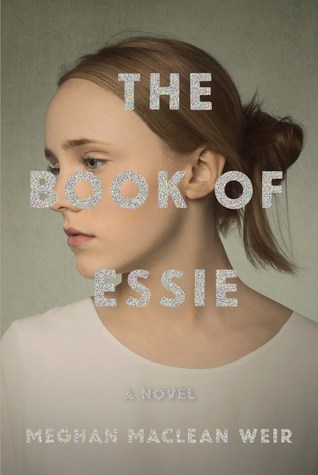The Book of Essie Meghan MacLean Weir (2018)
Given the prevalence of news stories about sexual abuse of children, women, and young men by priests in the Catholic Church, we may fall into the assumption that such abuse does not occur very much in Protestant evangelical religious groups. This novel is here to remind us that, wherever there is a great imbalance of power in a relationship, the potential for abuse of all kinds exists, and cover-ups that prolong the agony of the victims are certainly not limited to church hierarchies operating behind the closed doors of Catholic bishops’ offices.
The story of Esther (“Essie”) Hicks seems transparent. She’s one of the stars of the long-running fictional reality TV show Six for Hicks, which has chronicled the career of a preacher father (Jethro), a scheming mother (Celia), and their six children since before Essie’s birth. Essie is the youngest member of the family, and now, at age 17, she finds herself pregnant. Since it’s clear that her daily activities are tightly circumscribed and often filmed, readers suspect early on that the pregnancy is unlikely to have been the result of a consensual relationship.
We hear from three characters in turn, in first-person narrative:
Essie Hicks;
Roarke Richards, a male student at Essie’s high school who is not really part of the Hicks religious group; and
Liberty (“Libby”) Bell, who herself grew up in a different ultra-conservative millennarian cult and is now a journalist reporting on Essie.
Essie seems to have an elaborate plan to escape her family and provide financial security for herself and her unborn child, drawing on the significant resources generated for her parents by the TV show and by her father’s ministry. “Don’t get mad, get even,” she says at one point (131), as she remains improbably calm. However, the specifics of Essie’s plan are not revealed, even though readers hear directly from her throughout the novel. A lot is left to guesswork, and that keeps those pages turning. I was especially fascinated by the background details offered by the novelist, such as the phrasing used by the evangelicals in their conversations. Perhaps this was because I was brought up in a similar fundamentalist environment—though minus the reality TV show. I know the territory. Roarke sums up Essie’s family and her entire religious community in one explosive sentence: “You are, all of you, manipulative, self-centered, egomaniacal phonies. You use people up and you toss them aside.” (140)
The Book of Essie certainly has its flaws. I wanted much more character development of Essie’s father, Rev Jethro Hicks, the preacher who has kept evangelicals spellbound both in his mega-church and on television for decades. I wanted more explanation of the personality of the inscrutable Celia Hicks, Essie’s mother and the true force behind the media throne that Jethro occupies. I wanted more background on Essie’s five older siblings. I wanted less unrealistic analysis of difficult life situations by teenagers (Essie, Roarke), however precocious they may be. I wanted less of the distracting subplot about the tragic life story of Libby Bell.
Still, the narrative momentum of The Book of Essie is strong, with the author withholding the revelation of the paternity of Essie’s baby until late in the novel. The exploitation of Essie, not just by the man who impregnated her but by the many people who conspired to hide this crime, is painful to read about. Sadly, Essie’s story plays out in real life all too often.


